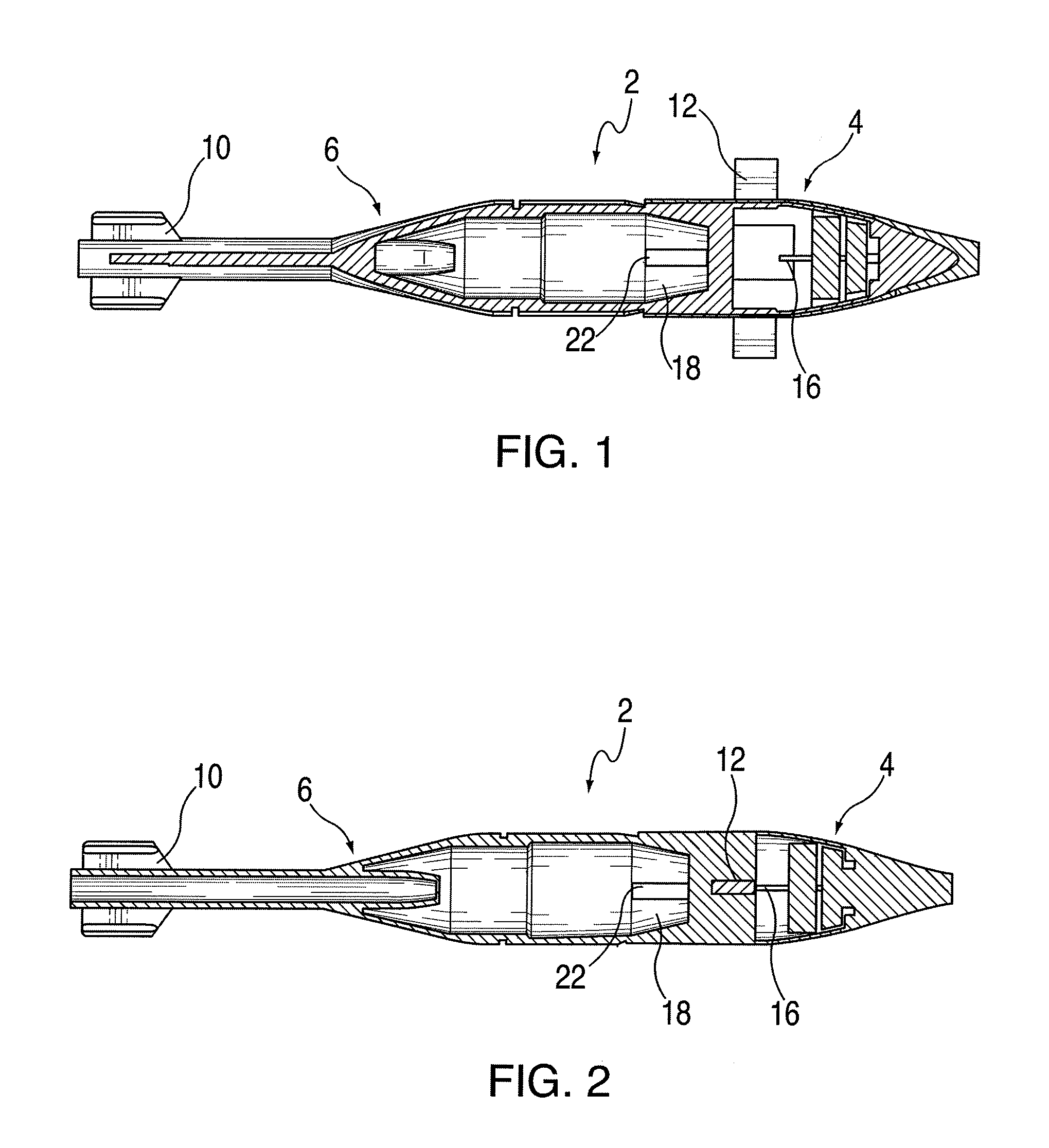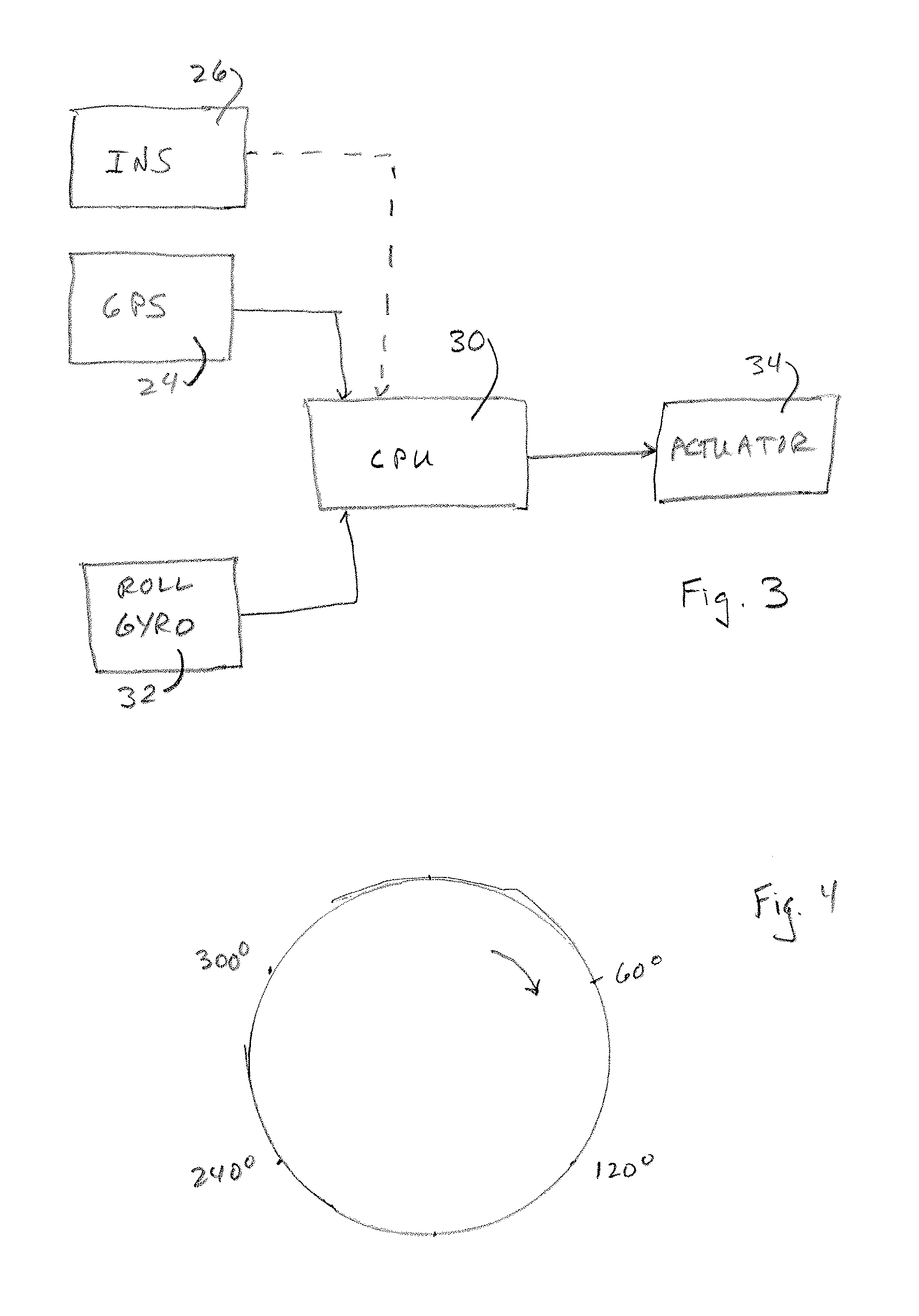Rolling projectile with extending and retracting canards
a projectile and canard technology, applied in direction controllers, instruments, weapons, etc., can solve the problems of not being practical for many projectiles, reducing weight and space requirements, and affecting the performance of maneuvering, etc., and achieves the effect of being less expensive and simpl
- Summary
- Abstract
- Description
- Claims
- Application Information
AI Technical Summary
Benefits of technology
Problems solved by technology
Method used
Image
Examples
example
[0070]In a calculated example of an embodiment of the invention, a mortar with a mass of 4.40 kg was fired at an initial angle of 45° with a velocity of 300.00 m / sec. The rotational frequency was 8.00 Hz, at the maximum lateral acceleration.
[0071]The time of the flight was 36.40 sec, the range being 5506.0 m. The maximum height was 1640.30 m, at which point the velocity of the projectile was at a minimum of 147.24 m / sec. This occurred 19.50 sec after launch. The velocity at impact was 194.76 m / sec, at an angle of 54.73°. The maximum lateral correction was calculated at 233.69 m.
[0072]FIG. 6 is a graph that represents the height of the path of the projectile from launch to impact, without canards extended. FIG. 7 is a graph that represents the amount of lateral correction necessary. FIG. 8 is a 3-dimensional representation that represents the uncorrected path 54 of the projectile as compared to a corrected path 56 with corrections according to the invention.
PUM
 Login to View More
Login to View More Abstract
Description
Claims
Application Information
 Login to View More
Login to View More - R&D
- Intellectual Property
- Life Sciences
- Materials
- Tech Scout
- Unparalleled Data Quality
- Higher Quality Content
- 60% Fewer Hallucinations
Browse by: Latest US Patents, China's latest patents, Technical Efficacy Thesaurus, Application Domain, Technology Topic, Popular Technical Reports.
© 2025 PatSnap. All rights reserved.Legal|Privacy policy|Modern Slavery Act Transparency Statement|Sitemap|About US| Contact US: help@patsnap.com



